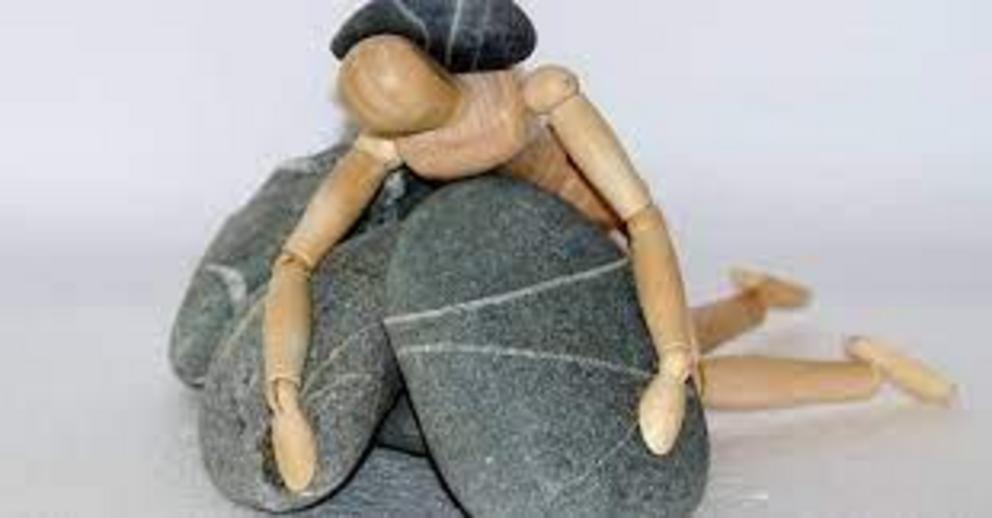Seven drivers for getting unstuck
We all have changes we want to make in life. These techniques can help.
Key points
- To overcome the feeling of being stuck, people can leverage drivers of change they already possess.
- BET I CAN are seven drivers of change that engage Behaviors, Emotions, Thoughts, Interactions, Context, Awareness, and Next steps.
- People usually get stuck due to a lack of skills, strategies for change that don't appeal to them, have difficulty persevering, or lack a goal.
- There is evidence that leveraging the BET ICAN drivers of change improves well-being in multiple domains of life.
When it comes to getting unstuck, one size does not fit all. Human beings are complex, and there isn’t a method of change that will work for everyone the same way, or with the same results. No need to fixate on one method of change, and neglect others that may be more effective for you. Many of us have tried to change something and have given up in frustration.
Our attempts to get unstuck usually fail because of four main reasons:
- Lack of specific skills with which to engage in the process of change
- Methods of change that don’t appeal to you
- Difficulty persevering
- Lack of a meaningful goal
Not all pathways to change will appeal to you. Some may be tedious, while others too hard. It is best to find easy, interesting, and appealing ways to get unstuck; ways that will bring you closer to a meaningful goal. With that in mind, our research team set out to develop specific skills that are appealing, easy to implement, and that relate to a meaningful goal.
 There are ways to get unstuck
There are ways to get unstuck
BET I CAN
After an extensive review of the empirical evidence, we created the BET I CAN method of change, which stands for: Behaviors, Emotions, Thoughts, Interactions, Context, Awareness, and Next steps. These drivers of change are based on scientific studies on how people change, achieve goals, and improve their well-being.
Since people change in different ways, we wanted to offer a menu of options that would appeal to various predilections. While some engage in a process of change by creating new behavioral habits, others succeed by modifying their thinking or increasing personal awareness.
Depending on the nature of your stuckness, you can try to do something differently (behavioral driver), relate to people in new ways (interactions driver), or simply alter the surroundings (context driver).
But of course, it’s not enough to tell people to change their behaviors or emotions. We need to provide them with specific skills. For each of the BET I CAN drivers of change, our team formulated two specific competencies:
Behaviors
- Set a goal
- Create a positive habit
Emotions
- Cultivate positive emotions
- Manage negative emotions
Thoughts
- Challenge negative assumptions
- Write a new story
Interactions
- Connect
- Communicate
Context
- Read the cues
- Change the cues
Awareness
- Know yourself
- Know the issue
Next Steps
- Make a plan
- Make it stick
Skills
Behaviors are powerful drivers of change. To start, stop, or maintain a behavior, we need to set a goal: exercise more, drink less alcohol, avoid procrastination, call your mother, spend more time with your partner. Once we set a goal, we can proceed to create a positive habit around that goal. That is how I started exercising regularly over 30 years ago: lay gym clothes next to bed, get up, light breakfast, brush teeth, floss, exercise. This is called "habit stacking," a healthy routine.
Emotions play an important role in well-being. Are you happy, engaged, motivated, depressed, despondent, angry, sad? Do you feel stuck in that emotional state? Fighting negative emotions is as important as cultivating positive ones. Expressing gratitude, savoring good moments, building on your strengths, finding the silver lining in adversity, and practicing mindfulness are some ways to nurture joy, peace, and contentment.
If you are not feeling good about yourself or a situation, it is wise to understand, label, and accept your emotions. Practicing acceptance through mindfulness is an effective way to deal with negative emotions. We all experience them from time to time. They are part of being human. Negative emotions are inevitable, but your reactions to them are not. You can be in control of your feelings by looking at their antecedents, practicing acceptance, and seeking support.
Thoughts are also powerful drivers of change. We can learn to challenge negative assumptions about ourselves. Negative thoughts, such as "I’m unlovable," "I’m incompetent," and "I’m a failure" can be challenged. Generalizations can be questioned by looking at the evidence: Have I always failed a job interview? Is it true that nobody ever loved me?
We can also recognize our cognitive errors, such as catastrophizing ("this is the end of the world"), shoulding (constantly telling yourself that you should be doing/thinking/feeling something else), or overgeneralizing ("this setback will define me for the rest of my life").
Instead of ruminating over a negative story about ourselves, we can write a new narrative. We can identify moments of joy, friendship, flow, compassion, and extract from them what is good and unique about us. We can identify positive values and strengths to build on.
The two skills, challenging negative assumptions and writing a new story, complement each other. A friend of ours grew up in a house of holocaust survivors. Her parents went through horrific trauma. Their parenting ability was impaired. As a result, their daughter heard negative messages about herself that she eventually internalized. Only once she learned to challenge the negative messages was she able to create a healthy narrative about herself and her abilities.
Interactions, or the way we relate to others, are strong determinants of health and well-being. We need to learn how to communicate, how to ask open-ended questions, how to listen nonjudgmentally, how to use “I statements,” and how to empathize. We also need to learn how to connect, how to celebrate our loved ones when they are up, and how to support them when they are down. We also need to master the art of fighting fair. Many couples don’t know how to edit their language or control their anger, nor do they know how to offer feedback. As a result, conflicts often escalate.
Contexts are also worth paying attention to. We often delude ourselves that our willpower can overcome the temptations around us. Willpower is overrated and contexts are underrated. Much is made of grit and tenacity, while too little is made of environmental cues and influences. Contextual cues are strong determinants of behaviors, emotions, and thoughts. Cues are all over the place. We just need to learn how to read the cues and how to change the cues. For example, likes in social media are cues. Some young people become depressed when their posts are not liked or ignored. They are so dependent on these cues that their social standing and entire lives come to be defined by likes.
The importance of self-awareness cannot be underestimated as a change strategy. Knowing yourself and knowing the issue are complementary skills. How do I react to certain situations? How is my past, personality, or predilections affecting my reactions to certain events? What patterns of behavior do I see in myself that often fail me? But insights about yourself are not enough. You also need to be curious about the issue at hand. Maybe the source of your suffering is not internal, but environmental. Oppressive relationships, tyrannical partners, despotic bosses, and discrimination are all real and valid reasons for feeling excluded, invisible, depressed, and marginalized.
Finally, we need to learn the art of the plan. This is what we call next steps. Once you’ve identified a problematic behavior or situation and a goal, how do you create a plan? You need to make a plan and make it stick. The science of implementation intentions tells us that the more specific our actions, and the more contingency plans we have, the more likely we are to succeed.
In total, I have listed seven drivers of change and fourteen skills that can be used to get unstuck and embark on a process of change. These can apply to your personal as well as your interpersonal, occupational, and social goals.
Evidence
We tested the BET I CAN model in two randomized controlled trials (RCTs) with 1,146 participants. The results showed that people who use the BET I CAN drivers of change report greater satisfaction with their interpersonal, community, occupational, psychological, physical, and economic well-being. Participants also engaged in more concrete activities to improve their interpersonal and physical wellness. Importantly, they also reported higher levels of self-efficacy and better levels of physical and mental health. Our studies, as well as others, demonstrate that BET I CAN skills can be successfully applied to improve well-being and self-efficacy in many domains of life.
Conclusion
Since people change in different ways, we had to offer a menu of options that could appeal to various appetites. Some people engage in a process of change by interpreting events in new ways, while others achieve goals through behavioral means. Some rely heavily on other people; others go it alone. We knew that no single theory of change could account for individual differences, nor, for that matter, help all people. As a result, we had to integrate the best of multiple approaches.
If you are interested in the intervention, you can visit www.funforwellness.com and learn more about all fourteen skills. Who knows, you may get unstuck and also get a laugh.
References
Myers, N. D., Prilleltensky, I., Prilleltensky, O., McMahon, A, Dietz, S., Rubenstein, C. L. (2017). Efficacy of the fun for wellness online intervention to promote multidimensional well-being: A randomized controlled trial. Prevention Science, 18, 984-994. https://doi:10.1007/s11121-017-0779-z
Myers, N.D., Dietz, S., Prilleltensky, I., Prilleltensky, O., McMahon, A., Rubenstein, C.L., & Lee, S. (2018). Efficacy of the fun for wellness online intervention to promote well-being actions: A secondary data analysis. Games for Health Journal, 7(4), 1-15. https://doi.org/10.1089/g4h.2017.0132
Myers, N.D., McMahon, A., Prilleltensky, I., Lee, S., Dietz, S., Prilleltensky, O., et al. (2020). Effectiveness of the fun for wellness web-based behavioral intervention to promote physical activity in adults with obesity: A randomized controlled trial. Journal of Medical Internet Research, 4(2), e15919. https://formative.jmir.org/2020/2/e15919/
Prilleltensky, I., & Prilleltensky, O. (2019). The laughing guide to a better life: Using humor and science to improve yourself, your relationships, and your surroundings. Rowman and Littlefield.
Prilleltensky, O., & Prilleltensky, I. (2019). The laughing guide to change: Using humor and science to master your behaviors, emotions, and thoughts. Rowman and Littlefield.
Prilleltensky, I., McMahon, A., Myers, N., Prilleltensky, O., Dietz, S., Scarpa, M., Lee, S., Pfeiffer, K., Bateman, A., & Brincks, A. (2020). An exploration of the effectiveness of the Fun for Wellness online intervention to promote health in adults with obesity: A randomized controlled trial. Journal of Prevention and Health Promotion. 1(2), 212 -239. https://doi.org/10.1177/2632077020968737

